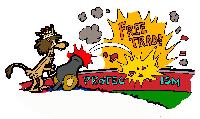
As trade integration across countries is intensifying, we hear more and more about Free Trade Agreements (FTAs) and Regional Trade Blocs (RTBs). As their name suggests these RTBs/FTAs are arrangements aimed for faster trade liberalisation at regional levels.
Countries are convinced that trade is an engine of growth and they are searching for arrangements that promote trade.
The WTO that contains 162 countries is the most popular one; a truly multilateral forum for trade liberalisation. But the history of WTO led trade liberalisation shows that the organisation is facing difficulty in bringing further trade liberalisation because of conflicting interest among large number of countries.
This has led to interest in trade liberalisation within a limited number of countries that may be regionally close together. These regional trade promoting arrangements advocate more tariff cuts and removal of other restrictions within the group while maintaining restrictions against the rest of the world.
Though many regional trade agreements like the EU, NAFTA and ASEAN were established before or around the time of WTO’s formation, there is mushrooming of RTBs in recent years. Recently formed Trans Pacific Partnership (TPP) shows this increasing affinity towards RTBs. Many RTBs like the TPP would like to make advanced level trade liberalisation and hence they are not satisfied with the slow pace of trade liberalisation within the WTO.
What are Regional Trade Blocs (RTBs)?
Regional Trade Blocs or Regional Trade Agreements (or Free Trade Agreements) are a type of regional intergovernmental arrangement, where the participating countries agree to reduce or eliminate barriers to trade like tariffs and non-tariff barriers. The RTBs are thus historically known for promoting trade within a region by reducing or eliminating tariff among the member countries.
Over the last few decades, international trade liberalisations are taking place in a serious manner through the formation of RTBs. They are getting wide attention because of many important international developments. First, now the world is trying hard to escape from the ongoing great recession phase. Second is the failure of the WTO to take further liberalisation measures on the trade liberalisation front.
The EU, NAFTA, ASEAN, SAFTA etc are all examples for regional integration. The triad of North America, Western Europe, and Asia Pacific have the most successful trade blocs. Recently signed Trans Pacific Partnership is a powerful RTB. Similarly, another one called RCEP is in negotiation round. India has signed an FTA with the ASEAN in 2009. Simultaneously, the country has signed many bilateral FTAs.
Different types of RTBs
All regional trade blocs don’t have the same degree of trade liberalisation. They may differ in terms of the extent of tariff cutting, coverage of goods and services, treatment of cross border investment among them, agreement on movement of labour etc.
The simple form of regional trade bloc is the Free Trade Area. The Free Trade Area is a type of trade bloc, a designated group of countries that have agreed to eliminate tariffs, quotas and preferences on most (if not all)goods and services traded between them.
From the lowest to the highest, regional trade integration may vary from just tariff reduction arrangement to adoption of a single currency. The most common type of regional trade bloc is the free trade agreement where the members abolish tariffs within the region. Following are the main types of regional economic integrations.
Classification of RTBs
Preferential trading union: Here, two or more countries form a trading club or a union and reduce tariffs on imports of each other ie, when they exchange tariff preferences and concessions.
Free trade union or association: Member countries abolish all tariffs within the union, but maintain their individual tariffs against the rest of the world.
Customs union: countries abolish all tariffs within and adopt a common external tariff against the rest of the world.
Common market: in addition to the customs union, unrestricted movement of all factors of production including labour between the member countries. In the case of European Common Market, once a visa is obtained one can get employed in France or Germany or in any other member country with limited restrictions.
Economic union: The Economic Union is the highest form of economic co-operation. In addition to the common market, there is common currency, common fiscal and monetary policies and exchange rate policies etc. European Union is the example for an Economic Union. Under the European Monetary Union, there is only one currency- the Euro.
At present, out of the total regional trade arrangements FTAs are the most common, accounting for nearly 90 per cent.
*********








